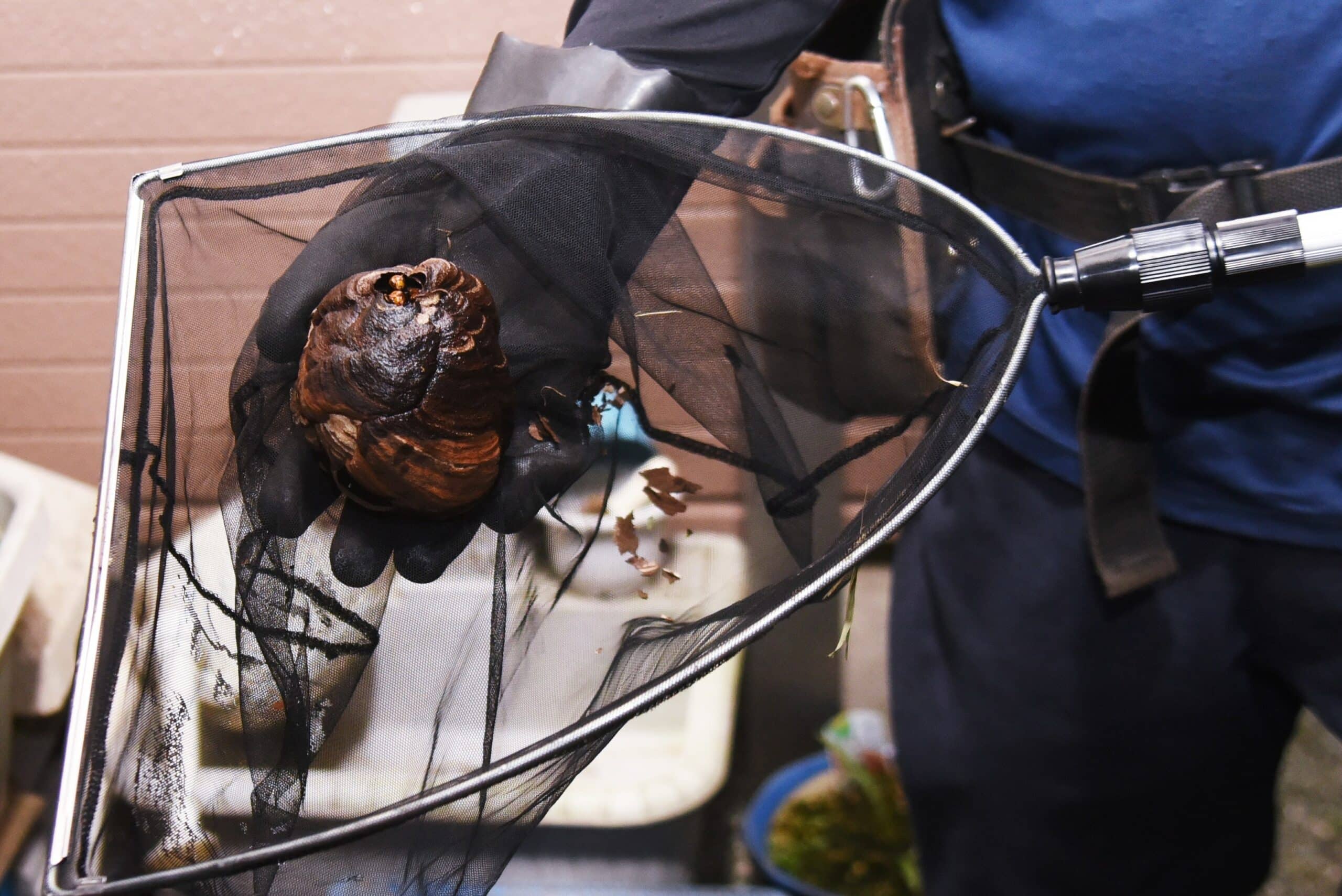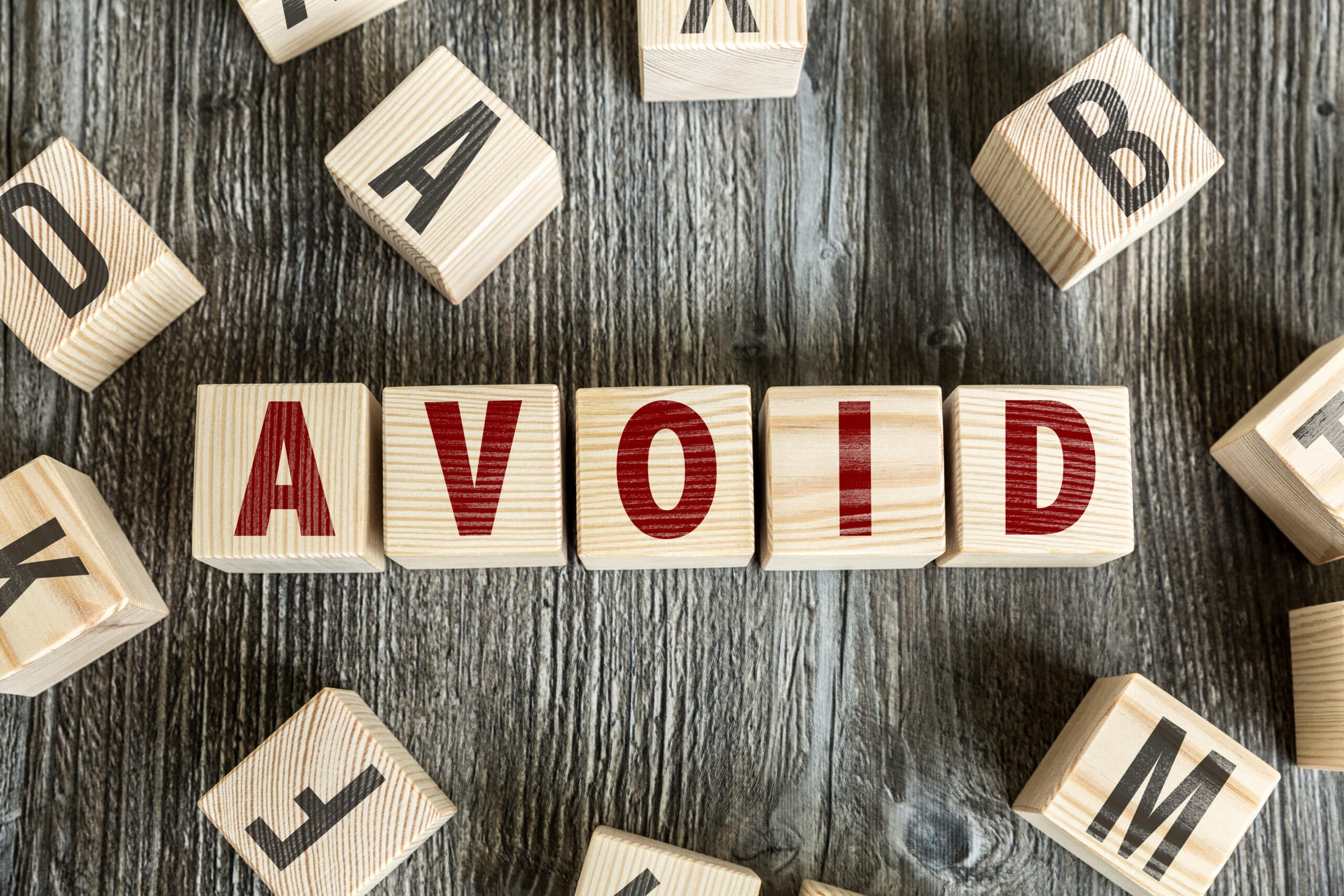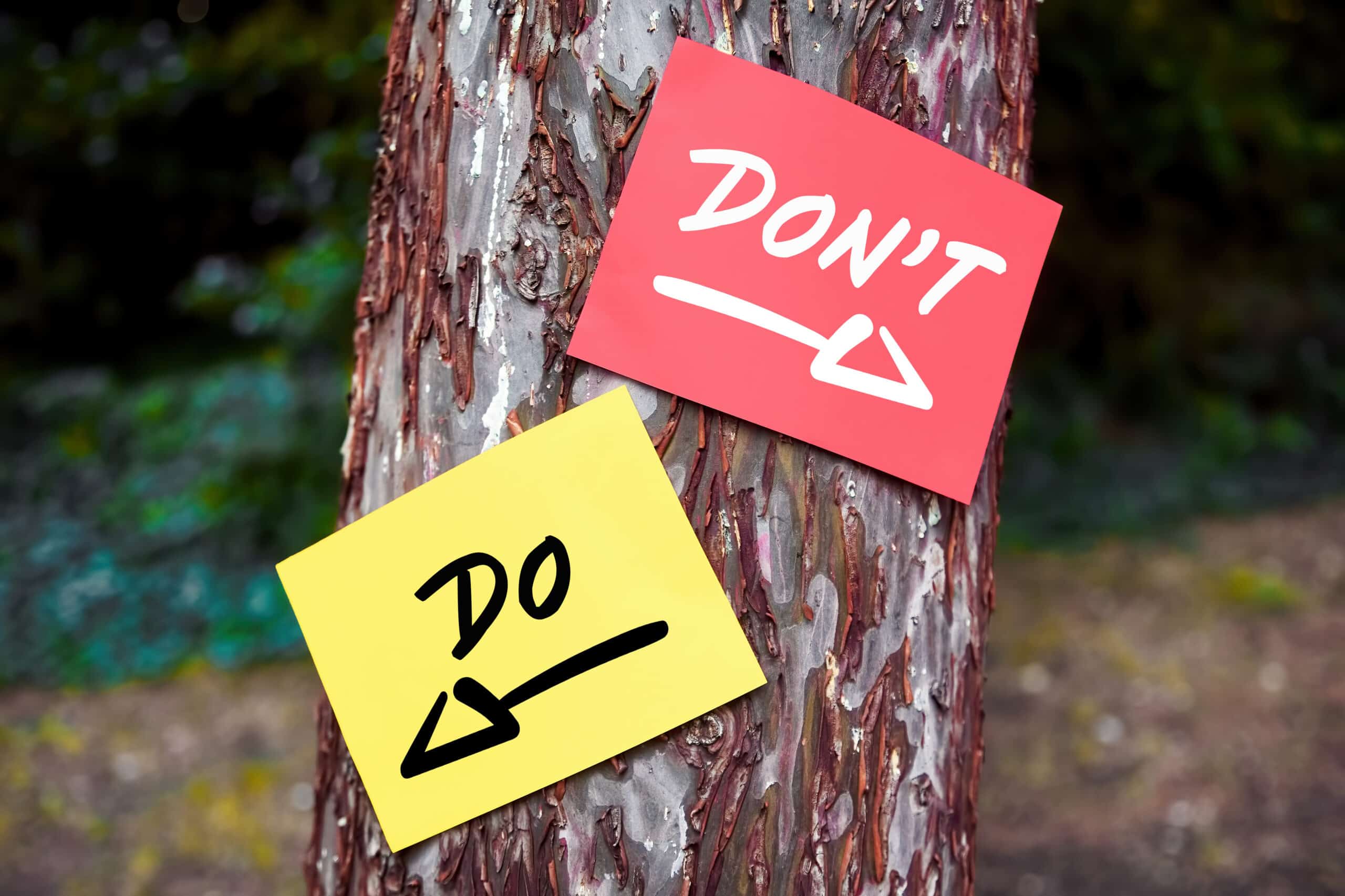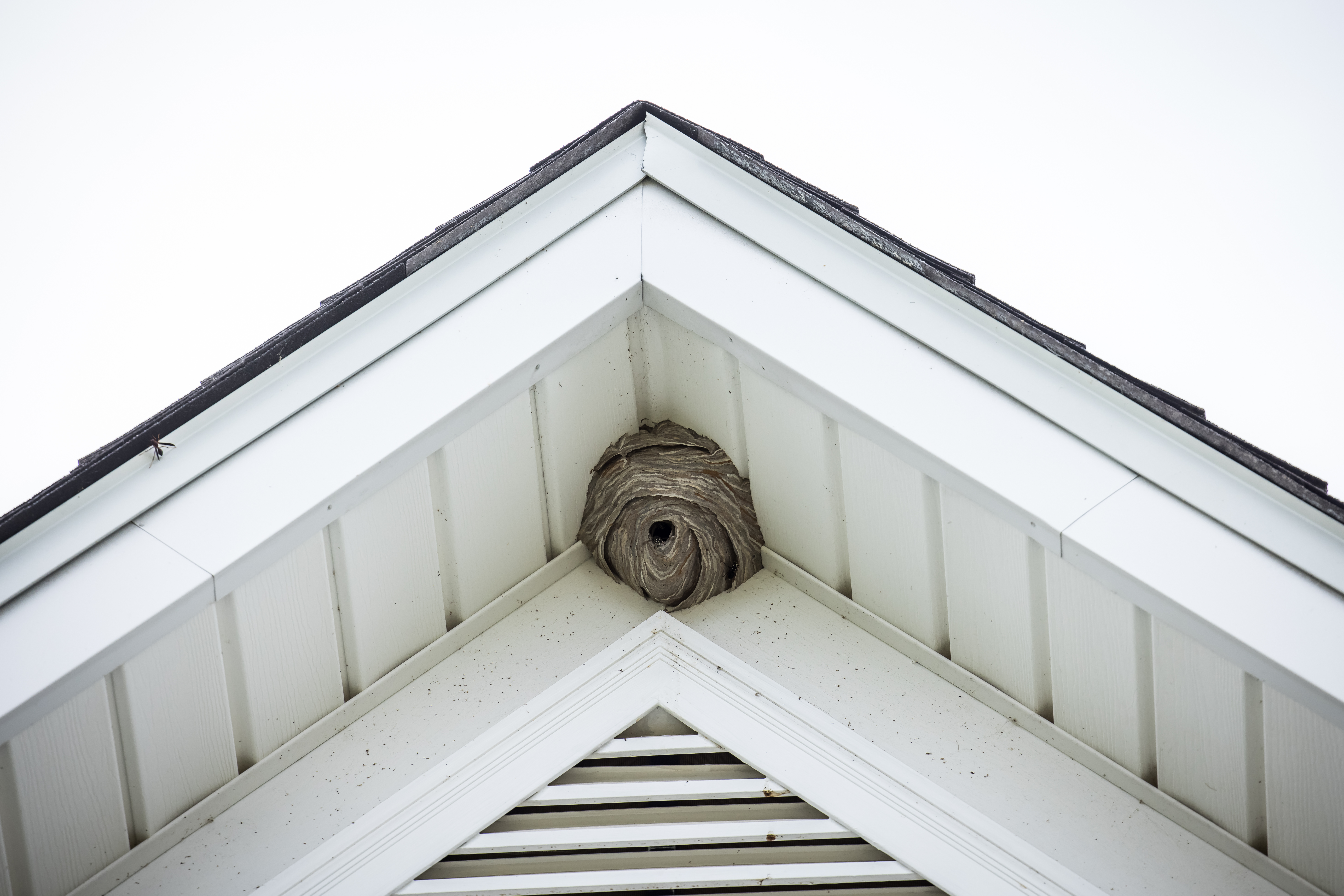Like most insects, wasps can be annoying, but they’re usually peaceful. The problem arises when they feel threatened or think you might attack their nests.
In order to protect themselves and their homes, wasps use their stings and “revenge” on intruders, which can be painful.
Read on to learn how to get rid of a wasp nest from your yard safely. For a more comprehensive plan in pest control, contact Environmental Pest Management.
Where Wasps Nest in Your Home
If you spot a couple of wasps once in a while, that shouldn’t be a problem. But if you start seeing swarms of these insects buzzing around your house, it’s sure there is a nest nearby.
Look for nests where wasps usually make them, such as around the roofs and gutters, in sheds, on trees, and in the attic. Pay particular attention to areas like AC openings, windows, and cracks in walls, as nests can be hidden in corners.
Sometimes, wasps can make nests in the ground. That can be especially problematic during the fall, when the leaves fall and cover these small forts. Then there is a great chance to step on them and cause a real wasp revolution.
After spotting the wasp nest, you should look for the best way to remove it and thus make these insects emigrate from your yard. You’re always free to try some DIY, but for best results, call an expert for wasp nest removal.
Best Methods for Wasp Nest Removal

Destroying wasp nests in your garden or yard will help you reduce the number of these insects and prevent them from hurting you. The nest location will tell you a lot about the wasp species you’ll be fighting, so you can find the best removal method.
Physical Removal
This method doesn’t require special tools or chemicals and is suitable exclusively for paper wasps nests. These insects aren’t too aggressive, so the nest is relatively easy to remove. But, of course, this doesn’t mean that caution isn’t necessary.
You’ll easily recognize paper nests by their umbrella shape and large openings. They’re mostly small, but if you don’t remove them in time, they can grow quite a bit during spring and summer, when wasps are most active.
Here’s how to get rid of a wasp nest that hosts paper wasps:
- Put some protective clothes on, and don’t forget gloves and glasses (use a beekeeper suit if you have one).
- Locate the wasp nest in your yard.
- Prepare the tools: a broom or mop handle or anything you can put on a long stick; a can of compressed air or a water jet will do, too, as these nests are light and fall off easily.
- Hit the nest with a stick, spray it, or hit it with a water jet.
- When the nest falls off, smash it with your safety boots or spray it with an over-the-counter pesticide.
If the paper nest hangs from a branch or porch, you can drown it this way:
- Approach the free-hanging nest quietly.
- Spray it with some wasp control product.
- Use a trash bag or sack and wrap the nest with minimal disruption.
- Slowly detach the nest from the roof or tree.
- Close the bag as soon as possible, tie it tightly, and put it into an enclosed trash can.
Use DIY Wasp Nest Removal Treatments
As effective as commercial wasp sprays are, we can’t help but mention their possible side effects and potential toxicity. Substances from these products can be harmful to people and small animals. And if you use these sprays in the garden, they can also adversely affect the plants.
That’s where DIY wasp removal treatments come in handy. You can try a natural wasp trap and then proceed to DIY killer sprays and repellents.
Vinegar and Soap Wasp Trap
For this trap, you need the following:
- Two cups of vinegar
- Two cups of sugar
- One cup of warm water
- A quarter cup of a dish soap
Mix all ingredients except soap until the sugar dissolves. Add the soap and mix to combine everything well. If the bubbles pop up, let the mixture sit until they settle.
During this time, make a trap. You need one small bottle to cut off its top to about one-third. Turn this piece over and place it so the bottle opening is now inside. Tape the edges to hold everything in place. Pour the prepared mixture into a bottle and hang it near the wasp nest.
Attracted by the smell of vinegar and sugar, wasps will enter the trap but won’t easily find their way out. Eventually, in the struggle to get outside, they’ll suffocate from the soap fumes. Shortly, you’ll see the reduced presence of wasps, making it a perfect chance to remove the nest.
Use Pesticides
DIY treatments may not give the desired result, especially when you deal with large colonies of wasps with several queens. You can’t kill them easily, and if they survive, they can rebuild and increase their colonies many times over. Thus the start of your pest problem.
So if natural traps and killer sprays didn’t work, you should try store-bought pesticides. Use them before physically removing the hive several times if necessary to ensure they have effectively reduced the number of insects and sting risks before destroying the nest.
If you’ve noticed ground nests in your garden, traditional spray pesticides can’t help you. What you need is insecticidal dust that penetrates through the soil to the nest interior and kills wasps almost immediately. Use this product according to the instructions and ensure no kids and pets are around. Be sure to wear a protective mask to avoid inhaling fumes.
Call Professionals
If you can’t handle wasp nest removal alone or might have an allergy to these insects (or don’t know your allergy status), calling exterminators is the best thing you can do. They have all the skills and experience in these situations. Not to mention they’re fully equipped with safety gear and wasp nest removal tools.
Request A Free No-Obligation Quote Today
We serve Dakota, Hennepin, Ramsey, Washington, and Anoka Counties.
We also serve Carver, Scott, Rice, Lesueur, and Steele
Calling professionals is a must if you deal with hornets or yellowjacket wasps, which are more dangerous than paper wasps. Also, you might need their help if you have a large or inaccessible hive around or recurring wasp issues. These experts can help you find the source of this problem and manage it successfully.
How Not to Remove Wasp Nest

Now that you know how to get rid of a wasp nest safely, you should pay attention to methods that can be counter-effective or even dangerous and avoid them.
Using Fire
Paper nests are relatively easy to destroy, so many people think not to hit them but simply set them on fire and watch them burn together with their buzzing residents. Another method is to light the fire underneath the nest and let the smoke chase the wasps away.
Both ideas seem good, but the implementation will most likely fail.
First, lighting a fire near the house and trees is by no means safe because even the slightest carelessness can lead to a fire.
Second, fire and smoke won’t kill all the wasps but only disorient some. Those that survive will become very aggressive and sting anyone they come across.
Using Water
Just like with fire, water is a bad choice for wasp nest removal. You might benefit from a water jet to knock down the nest from the roof edge or tree, but you shouldn’t use water jets if you spot the nest inside your attic, on your porch, or in a garden shed, as you might damage your property.
Flooding the hive and thus suffocating the wasps won’t work as you might think it should. Trying to kill the pests this way will leave them vicious and aggressive. As they’re quite intelligent insects, they’ll put themselves together very fast and prepare for revenge with their sharp pricks.
Smashing the Nest
Hitting the nest with a short stick or a baseball bat is probably the worst idea you can have.
First, you won’t kill the wasps that way, as they’re small and can easily get away while you hit the hive.
Second, smashing the wasp nest on the spot is dangerous and can leave you with dozens of stings. That can be harmful to your health if you’re allergic to these insects and potentially risky if you don’t know whether you’re allergic to them.
Dos and Don’ts of Wasp Nest Removal

If you ask how to get rid of a wasp nest but haven’t done that before, here are some helpful tips and beginners’ mistakes to avoid.
Dos
- Wear protective equipment: You need protective clothing for this job. It’s important to cover your face, especially the eye and neck, because a wasp bite in these areas can be very painful and dangerous.
- Evacuate the area: Wasp nest removal usually doesn’t take long, but it’s advisable to keep your kids and pets away during this time. Tell them to stay in the house, or better yet, to go for a walk while you finish your work.
- Have a first aid kit on hand: Wasp stings aren’t dangerous if you’re not allergic, but they can be painful. An ice pack, an anti-inflammatory remedy, and some antihistamines will ease the pain, but pay attention to the wound for the next 24 hours in case of an allergic reaction.
Don’ts
- Avoid using ladders: If the wasp nest is too high or inaccessible, stepping on ladders to reach the hive is a bad idea. Not only do you risk being stubbed, but you also risk falling from the height when a wasp swamp attacks.
- Don’t use electric tools: Wasp nest removal should be done quietly and discreetly to not disturb its buzzing residents. Electric tools like drills, chainsaws, and the like aren’t a good choice for this job because they’re loud and produce vibrations that make the wasps go crazy. Plus, they won’t be of use if a hive is high up.
- Avoid flashlights: When a nest is in a hidden corner, or you remove it in the evening, you need some extra lighting. Wasps find flashing and LED lights irritating, so pointing a flashlight into their nest greatly disturbs them. To avoid that, use red light that’s far more discreet.
How to Perform Wasp Control
Whenever you can, try not to kill the wasps, as they’re excellent pollinators; instead, try to deter them with insect repellents and prevent them from nesting in your yard.
Other methods you can use for wasp control include the following:
- Apply insect repellents to areas where these insects can build nests; good natural remedies are essential oils, such as mint, lemongrass, and sage.
- Use insect traps.
- Seal large cracks in your walls and house openings.
- Throw garbage away and remove rotten fruits from the ground.
- Don’t leave food leftovers outside.
Frequently Asked Questions
When Is the Best Time to Remove Wasp Nest?
It’s best to remove the hive in spring or early summer before the wasps form a colony. It’s best to do it early in the morning or at dusk because then these insects are less active and aggressive.
How to Get Rid of Wasps in Your House?
If a wasp wanders into the house, you should open windows or doors and use directed airflow to drive them away; a portable fan or hairdryer will work. Don’t swat them as a dying wasp releases poison that signals other wasps to come.
Bottom Line
For those wondering how to get rid of a wasp nest, several solutions are listed above at your disposal.
Remember, however, to not kill these insects. Instead, drive them away by destroying their hive whenever you can.
And if you can’t do it yourself, it’s always best to call the experts from Environmental Pest Management, who’ll help solve your wasp and other pest problems quickly and efficiently.

